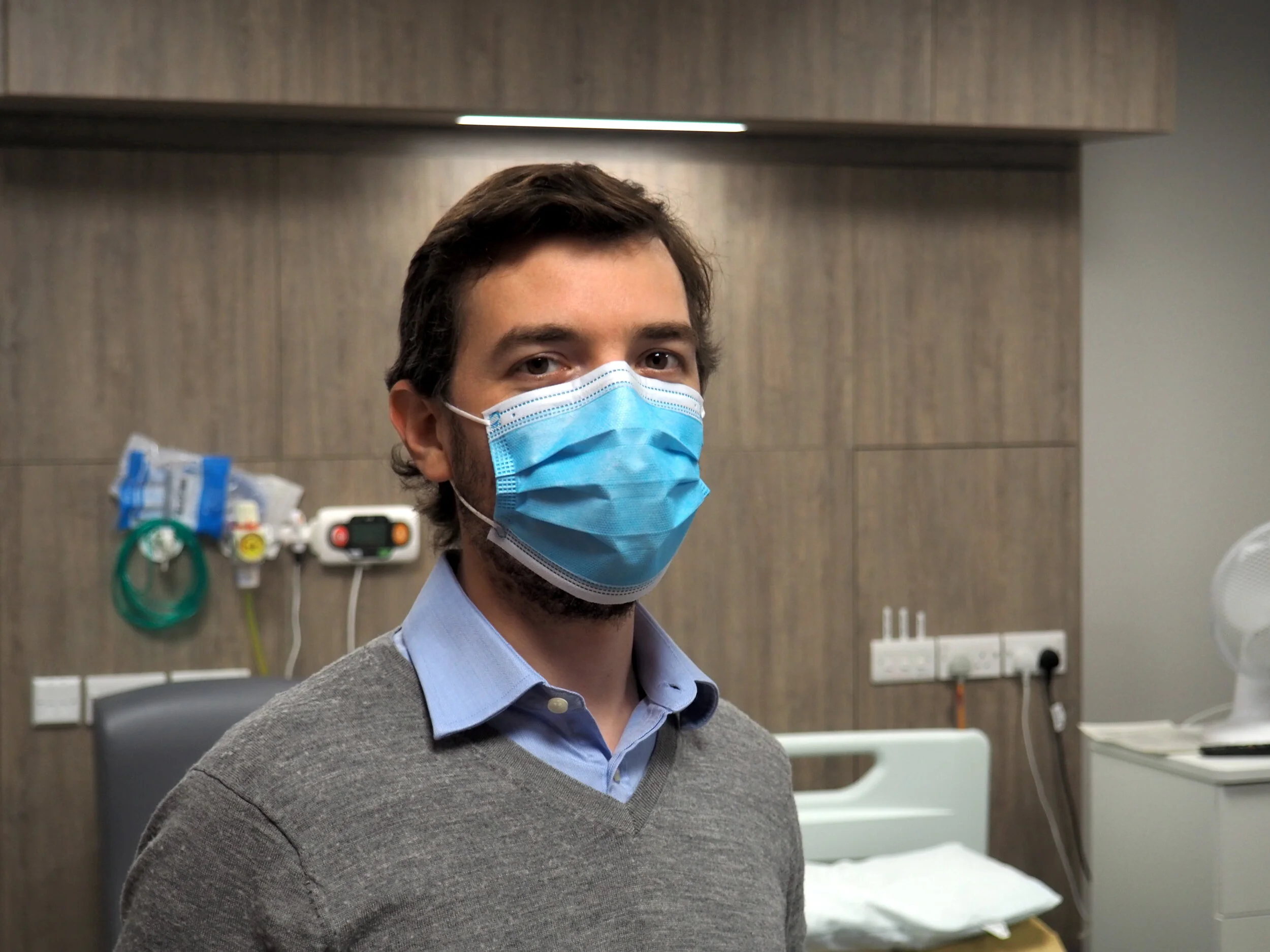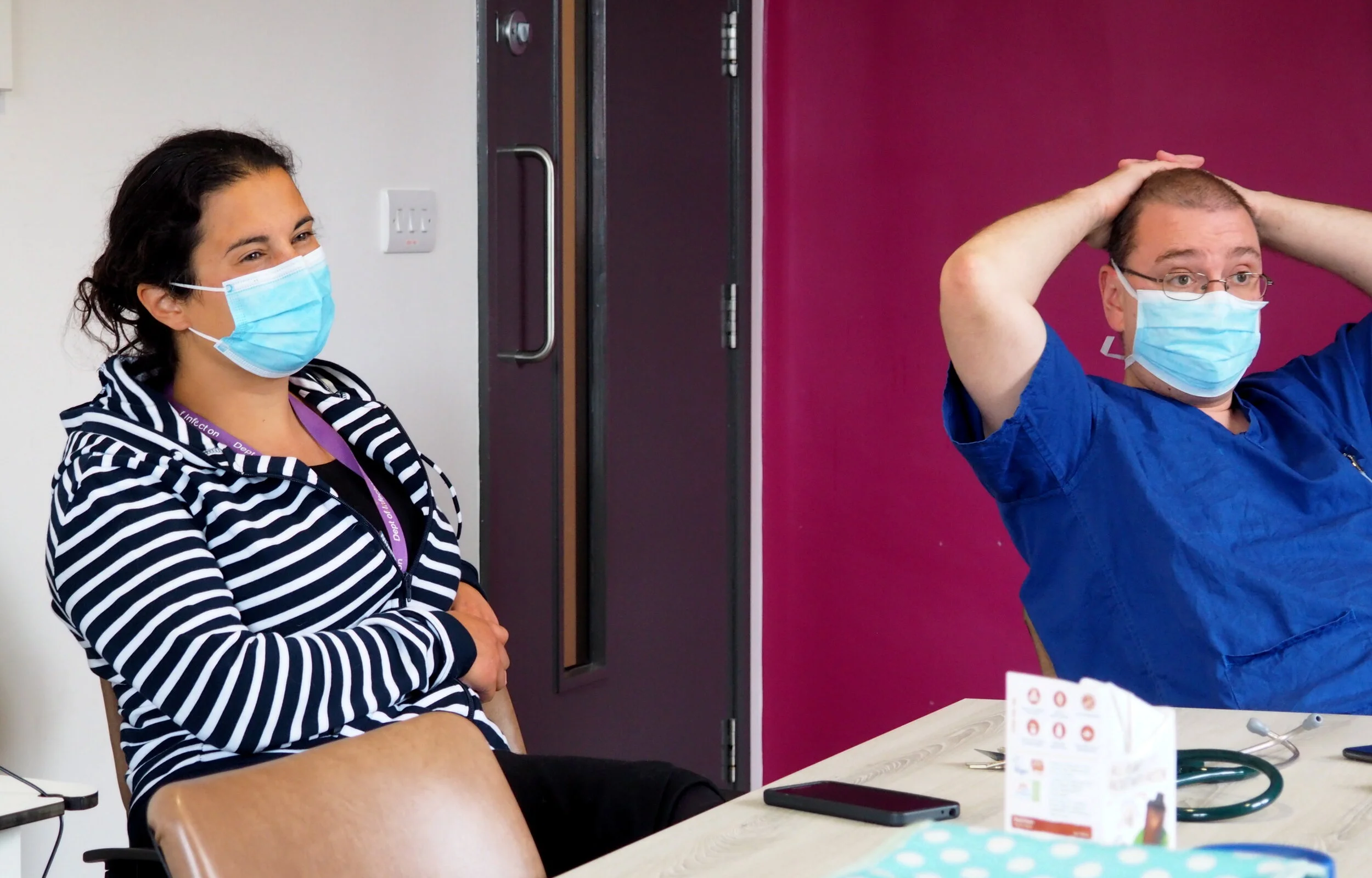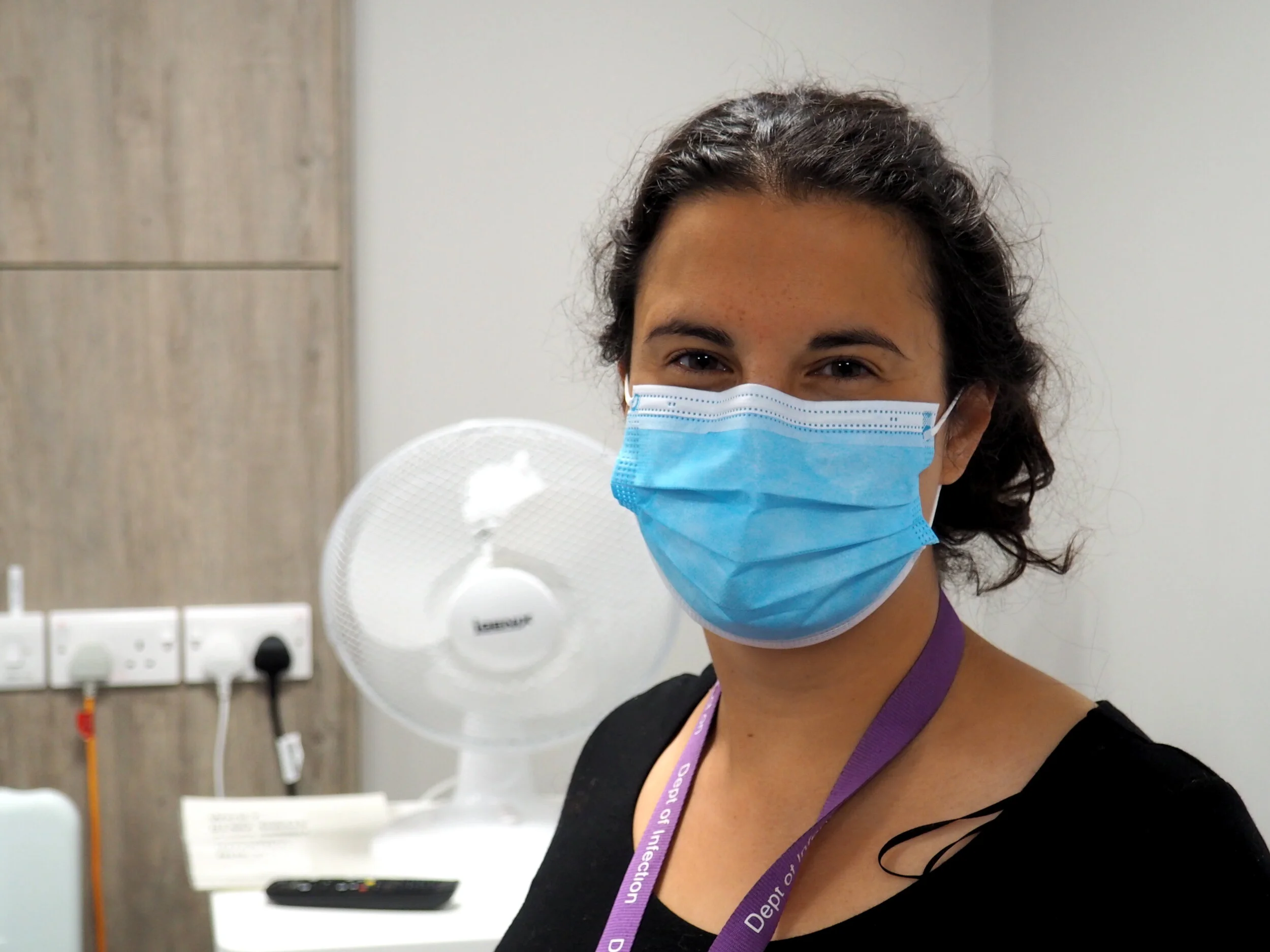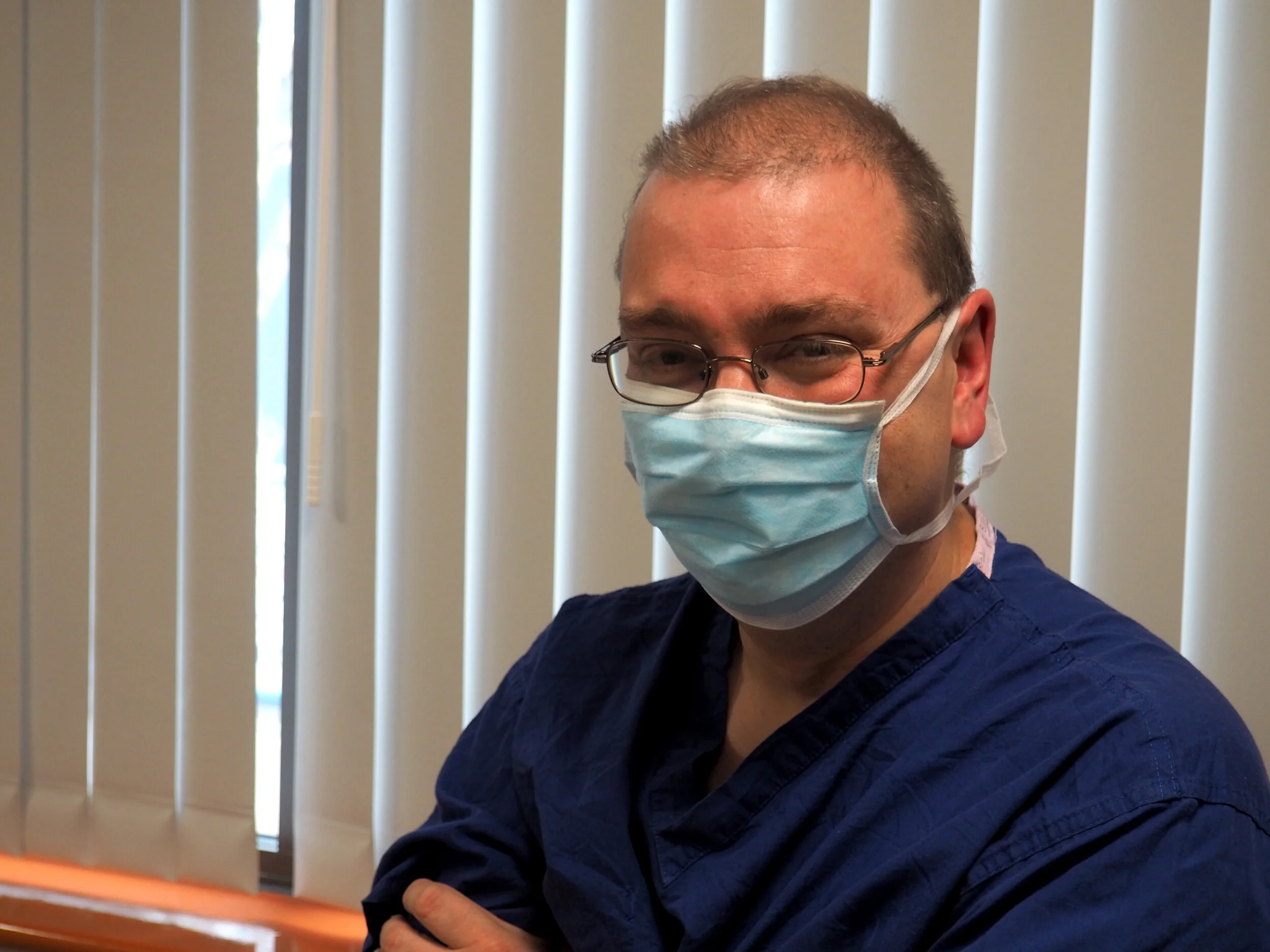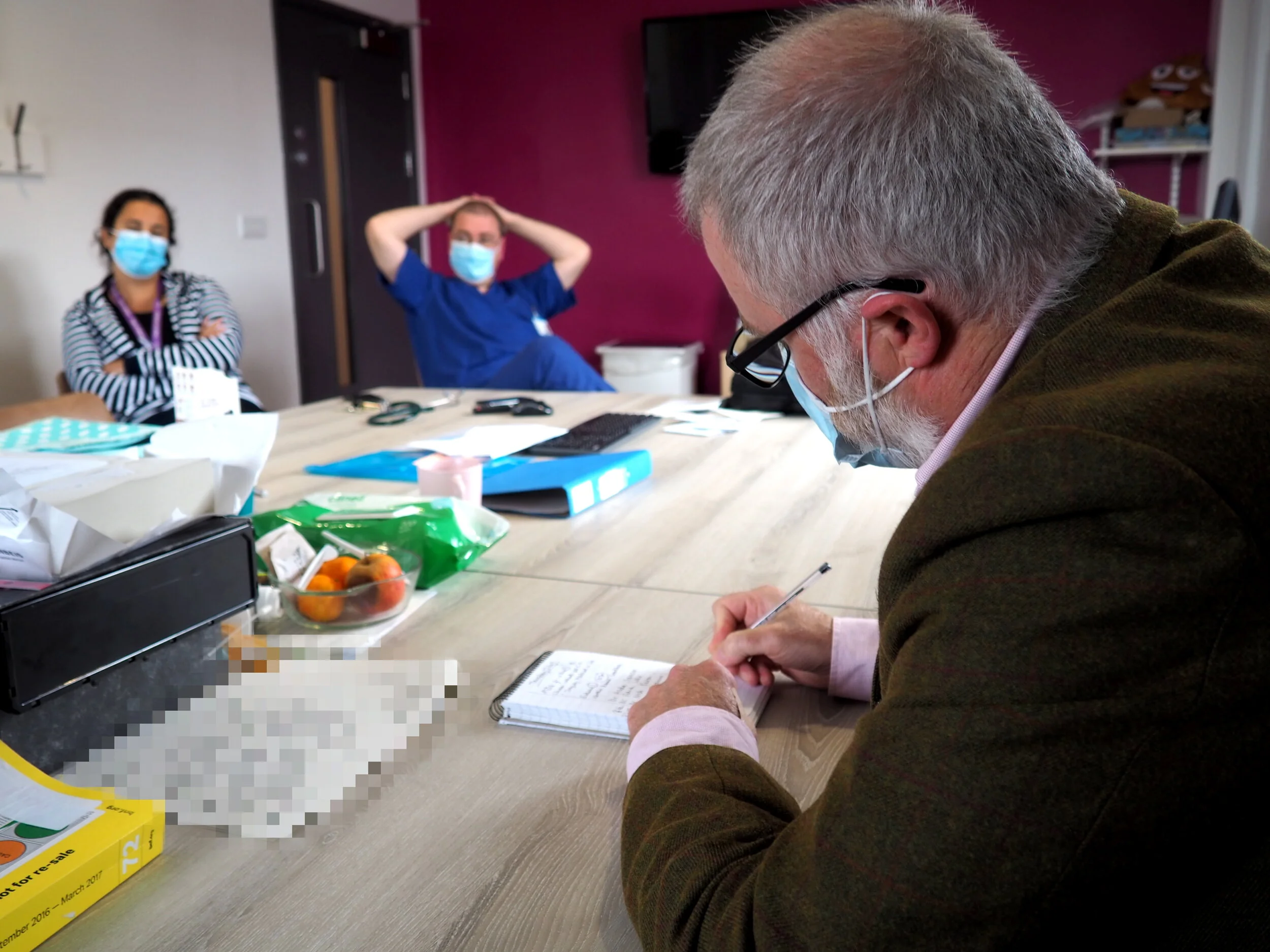Excitement, fear, and walkie-talkies from Argos - how Hull’s top medics dealt with the UK’s first two Covid-19 cases
FRONTLINE PIONEERS: From left, consultants Nick Easom, Anda Samson, and Patrick Lillie in the infectious diseases unit at Castle Hill Hospital
It was 48 hours in a rapidly developing crisis that would put Britain on a war footing and trigger the biggest public health emergency in 100 years. In this exclusive interview with the doctors who were there, Simon Bristow tells the inside story of the UK’s first two coronavirus cases
It was mid-morning on Wednesday, January 29, when the call came in to the NHS 111 line.
Two Chinese nationals - a mother and her son - felt sufficiently unwell to seek medical advice. They were put through to a GP who spoke to them over the phone at their hotel room in York. From the information she received she wasn’t taking any chances.
The mother reported mild symptoms - “a cough and a sneeze” - while the son, a student in his 20s at York University, had a fever. His parents, who were in their 50s, had flown in to see him three days earlier from Hubei province in central China. It was in Hubei’s capital city, Wuhan, where the coronavirus outbreak began in December.
The doctor completed her consultation and called the infectious diseases unit at Castle Hill Hospital in Cottingham. Dr Monica Ivan, a consultant, took the call and said mother and son needed to come to Castle Hill. She began calling her colleagues as the first acts in the intense drama that would later paralyse the country began to unfold.
The family were told to isolate in their hotel room until specialist ambulances came to collect them. Among those alerted were consultants Nick Easom, Anda Samson, and Patrick Lillie, who would have the most direct contact with the patients. Dr Easom had only recently joined Hull University Teaching Hospitals NHS Trust, which runs Castle Hill and Hull Royal Infirmary.
HAD JUST STARTED NEW JOB: Nick Easom
All three doctors sprang into action, not knowing what they were dealing with. “I was in my office at Hull Royal,” said Dr Easom. “I got in my car and got there [Castle Hill] in about 20 minutes, driving across town at speed.”
“We just needed to activate our processes, which we didn’t have yet,” said Dr Samson. Dr Lillie said there had been many “false alarms” and thought it was “probably going to be a training exercise”.
They prepared the rooms on Ward 7 - the specialist unit opened in 2018 to treat patients with highly contagious viruses and drug-resistant infections - and sent a colleague out to make some unexpected purchases.
These were an electric razor to remove Dr Easom’s “bushy beard” so his personal protective equipment (PPE) would fit securely, and walkie-talkie radios from Argos so they could communicate freely between cubicles. It had been decided to isolate all three patients in separate rooms.
They had a meeting between 4.30pm and 5pm to discuss their readiness. Another consultant, Dr Kate Adams, relieved them, and the three decided to go ahead with plans to attend a colleague’s leaving dinner at The Westwood restaurant in Beverley.
Dr Lillie texted Dr Adams at 7.45pm to check on the patients’ progress and received the reply: “There’s now three coming!” A further text revealed the patients were “ten minutes away”, and Dr Lillie and Dr Easom decided to return to the hospital - to the bemusement of the waiters who had just brought their starters.
They got back to find Dr Adams putting on her extensive PPE; an arduous task known as “donning”, and the others did the same. At about 9pm they were ready to go in and see their patients.
TIME TO REFLECT: Anda Samson, left, and Patrick Lillie
One difficulty immediately arose - the language barrier. Although the student spoke English his parents did not. Dr Easom, who was dealing with the father with a registrar called Tom, tried using a translation app on his phone; speaking through his PPE into the device which would in theory translate into the native tongue of his patient. But it was “pretty ropy”, he said.
The walkie-talkies had not helped either. “They were toys; everybody used their mobile phones instead,” Dr Easom said.
Although mother and son did not meet the then criteria for coronavirus testing (the father had no symptoms), it was decided in consultation with Public Health England to test them anyway. There were two strands to this - local testing done on-site to eliminate more common explanations for their illness, such as flu and pneumonia - and samples taken for Covid-19, which would be taken by courier to Collingwood Laboratory in London.
These included throat swabs, blood, urine and faeces samples. This took about 90 minutes, with the doctors labouring in full PPE. There was some solace, however, as Dr Samson had returned from the restaurant with Dr Lillie’s steak and a cheeseboard for Dr Easom.
Testing for Covid-19 had only become possible globally 15 days earlier after scientists managed to identify the DNA of the virus.
At 1.20am the following day, Dr Lillie received a text from Dr Adams saying the local tests had come back negative. All eyes were on London.
The three doctors went home to get what sleep they could - with Dr Lillie, who lives in Sheffield, “crashing” at a colleague’s in Hull. Some already had a feeling about what the results from the Covid-19 testing in London would be. Dr Easom discussed it with a colleague, Peter Moss, and said: “We both agreed these are what the first cases in the country would look like.”
Confirmation that mother and son had tested positive for the deadly virus came later the same day - Thursday, January 30 - the day the World Health Organisation declared coronavirus a global public health emergency. Dr Sansom said: “At 11pm I got a phone call from Gavin Barlow [honorary consultant]. I’d just got in bed and he said ‘You need to come back to the hospital, please, they are positive’. I sat right up in bed and said ‘What?’
“I came back here and there was this buzz around the wards, a nervous buzz. They put two nurses on the ward who had been trained. The first time round it was scary.”
‘THERE WAS A NERVOUS BUZZ AROUND THE WARD’: Anda Samson
By this time, London had informed the small network of High Consequence Infectious Disease (HCID) units in England and word was spreading fast. Dr Lillie was back in Sheffield for the night. At 1.15am on the Friday, the 31st, he began receiving calls on his mobile from a friend who was the lead consultant at the Sheffield unit. He twice pushed his phone away thinking “somebody’s got the wrong number” before the friend got through, saying: “You’ve got the first two cases.”
Messages began being sent up and down the trust’s chain of command for those who needed to know immediately, which included the chief executive and the communications team. But the people at the heart of it were still in the dark. “The patients didn’t know; they were asleep,” Dr Samson said.
As professionals, the doctors relished the challenge while mindful of the responsibility they had, with the risk to life and the whole weight of the Department for Health, Public Health England, and other health and scientific leaders bearing down on them.
“It is exciting, it’s why you do it,” said Dr Lillie. “Your adrenaline is buzzing. I started sending emails at 4.30am.”
‘IT’S WHY WE DO THE JOB’: Patrick Lillie
Asked if they had been scared about the risk to themselves, Dr Samson said: “I wasn’t frightened for me. I was frightened about getting it wrong, and I was frightened about making a mistake because of our older colleagues, because it was clear the older you were the more vulnerable you were.”
Although staff at Castle Hill were confident of treating the two patients there, it was decided to transfer them to the HCID unit in Newcastle, which was felt to be more senior and experienced.
The patients were informed of the results, and that they were being transferred to Newcastle, early that morning. “The ambulances [from Newcastle] pulled up around 5am and then we went to tell the patients,” Dr Samson said. “We also told them they had to go to Newcastle. We first told the son and told the son to phone the mother, and we went to see the mother and did the same with the father. And then we got them in the ambulances.
“People were arriving for work and we had to get security to make sure we cleared the entrances.”
Among the crowds coming the other way was someone just beginning their medical career. Dr Samson said: “There was a girl standing at the back exit. She said ‘Hello, I’m a student nurse. This is my first day. Is this Ward Seven’?”
WHERE IT ALL HAPPENED: Ward Seven, the infectious diseases unit at Castle Hill Hospital
Public Health England announced the UK had its first two confirmed coronavirus cases that morning. The trust informed staff the cases had been at Castle Hill in an email that afternoon. Within minutes it was leaked to the media.
Since then, the three doctors have become like a Covid-19 flying squad for the trust, attending suspected cases and directing efforts to isolate them and prevent potential spread of the virus. They have also been training staff, passing on the expertise they were gaining almost by the hour as more was learnt about the virus and how to respond to it.
“Things were changing every three to four days,” said Dr Ivan. Dr Samson said: “I had to constantly write protocols, writing, printing and taping them to the table.”
They are also actively involved in efforts to find a vaccine.
They are still hard at it, doing the most noble job of saving lives and protecting people. They are less tired than they were at the mid-April peak of the virus, when the trust had about 100 coronavirus patients, and eight confirmed cases being admitted each day.
TELLING THEIR STORY: Anda Samson left, and Patrick Lillie, speaking to Simon Bristow from The Hull Story
But it’s clear the virus has left its mark. They sound like war veterans when they talk of events only six months old in terms of “what we did in those days”. But it’s also been a positive experience.
Dr Ivan said: “One thing I really want to mention is I’ve never felt people coming together so much. We had senior doctors wanting to come to infectious diseases even though there was danger. Chris Long [trust chief executive] was coming here almost daily, saying ‘How are you’?”
“There was a real flattening of hierarchy,” Dr Easom said.
The two patients were successfully treated and both survived the disease. The mother had been in contact with a colleague in China, who tested positive for the virus, just two days before flying to the UK.
The doctors were full of praise for their colleague in York. “The York GP did an amazing job,” Dr Lillie said. “She could have just said ‘You’ve got a cold’.”


